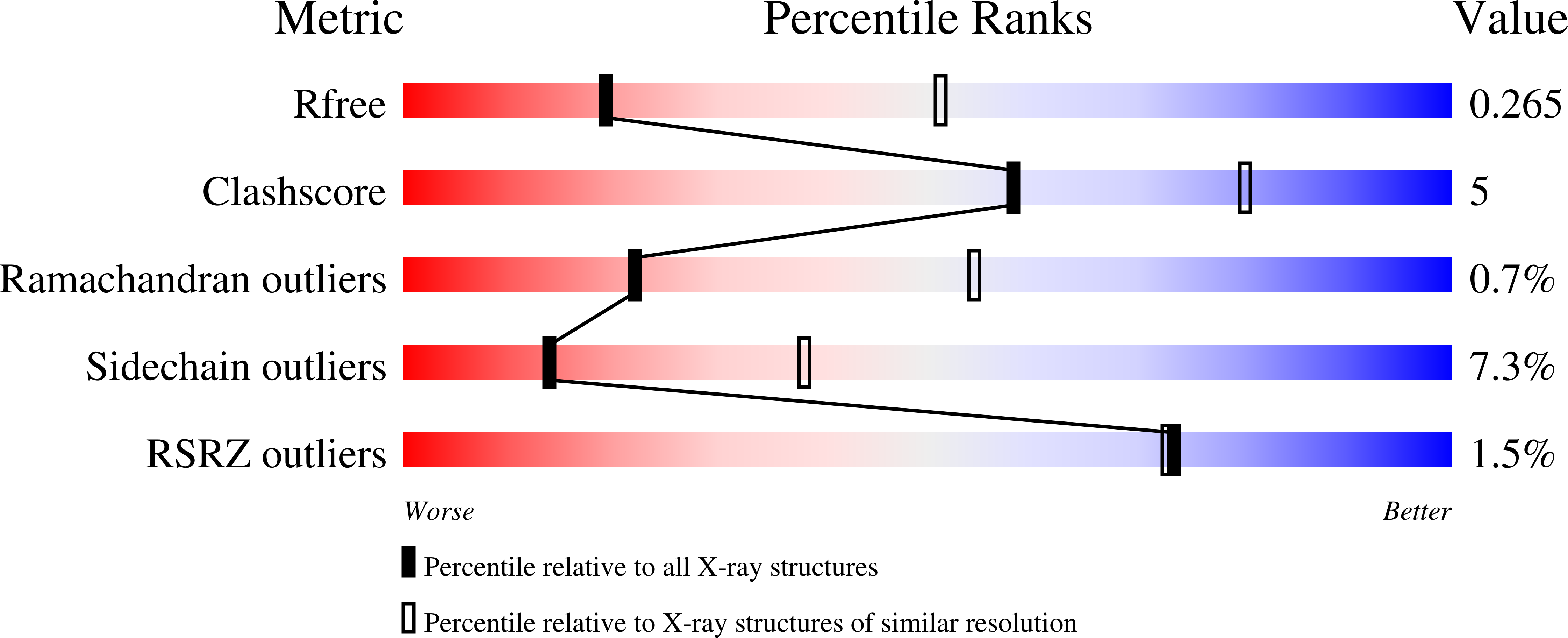Structure of Leishmania mexicana phosphomannomutase highlights similarities with human isoforms
Kedzierski, L., Malby, R.L., Smith, B.J., Perugini, M.A., Hodder, A.N., Ilg, T., Colman, P.M., Handman, E.(2006) J Mol Biology 363: 215-227
- PubMed: 16963079
- DOI: https://doi.org/10.1016/j.jmb.2006.08.023
- Primary Citation of Related Structures:
2I54, 2I55 - PubMed Abstract:
Phosphomannomutase (PMM) catalyses the conversion of mannose-6-phosphate to mannose-1-phosphate, an essential step in mannose activation and the biosynthesis of glycoconjugates in all eukaryotes. Deletion of PMM from Leishmania mexicana results in loss of virulence, suggesting that PMM is a promising drug target for the development of anti-leishmanial inhibitors. We report the crystallization and structure determination to 2.1 A of L. mexicana PMM alone and in complex with glucose-1,6-bisphosphate to 2.9 A. PMM is a member of the haloacid dehalogenase (HAD) family, but has a novel dimeric structure and a distinct cap domain of unique topology. Although the structure is novel within the HAD family, the leishmanial enzyme shows a high degree of similarity with its human isoforms. We have generated L. major PMM knockouts, which are avirulent. We expressed the human pmm2 gene in the Leishmania PMM knockout, but despite the similarity between Leishmania and human PMM, expression of the human gene did not restore virulence. Similarities in the structure of the parasite enzyme and its human isoforms suggest that the development of parasite-selective inhibitors will not be an easy task.
Organizational Affiliation:
Infection and Immunity Division, The Walter and Eliza Hall Institute of Medical Research, Melbourne, Australia.




















